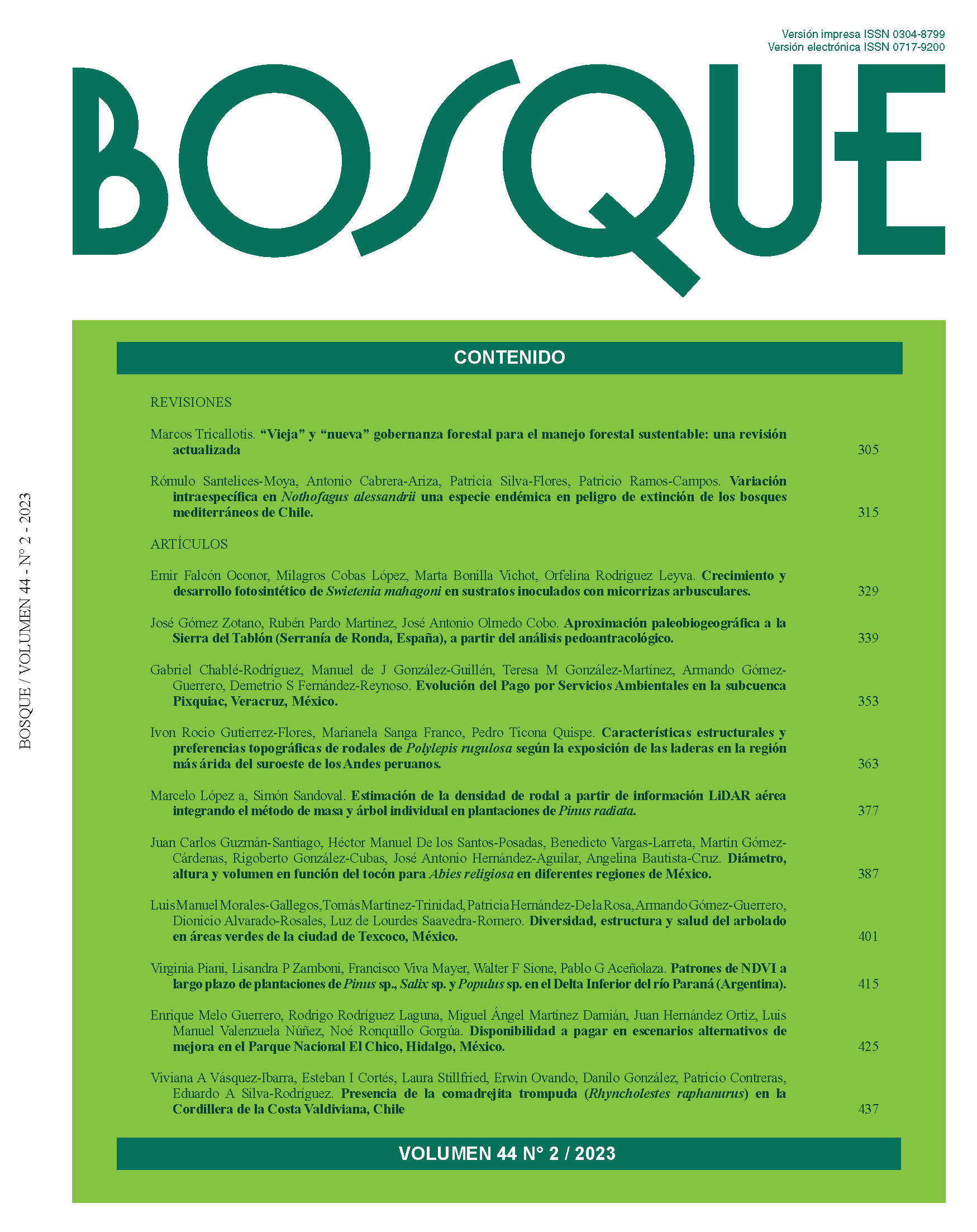Estimation of stand density using aerial LiDAR information: Integrating the area-based-approach and individual-tree-detection methods in plantations of Pinus radiata
Conteúdo do artigo principal
Resumo
A mixed approach was applied using aerial LiDAR information to estimate the stand density in a Pinus radiata plantation. The methods used individual tree detection (ITD) information to improve stand density estimates from the approach-based area (ABA) method. Method 1, which corresponds to the traditional ABA estimation in a linear mode, obtained a RMSE = 23.6 % and a AIC = 840.9, where the LiDAR metrics used were in the 95 % percentile and the ratio between first returns over 1.3 m (COV). Method 2, which corresponds to an Individual Tree Detection (ITD) algorithm configured with a search window of 3 meters and a height defined by the 50th percentile, resulted in a RMSE = 49%. The mixed method 3 used the number of trees detected in method 2 as an additional metric in the ABA method, generating RMSE = 20.9 % and a AIC = 822.1. Method 4 was defined as mixed with error, which incorporated the number of trees estimated using the ITD method as another predictor variable, generating a RMSE = 21.3 % and a AIC = 835.2. The method with the best performance was 3, reducing 2.7 percentage points with respect to the RMSE of method 1 (traditional ABA). The integration of the ABA and ITD methods improved estimations of stand density, and also achieved better representation of the spatial variability of the number of trees at complete stand level.

